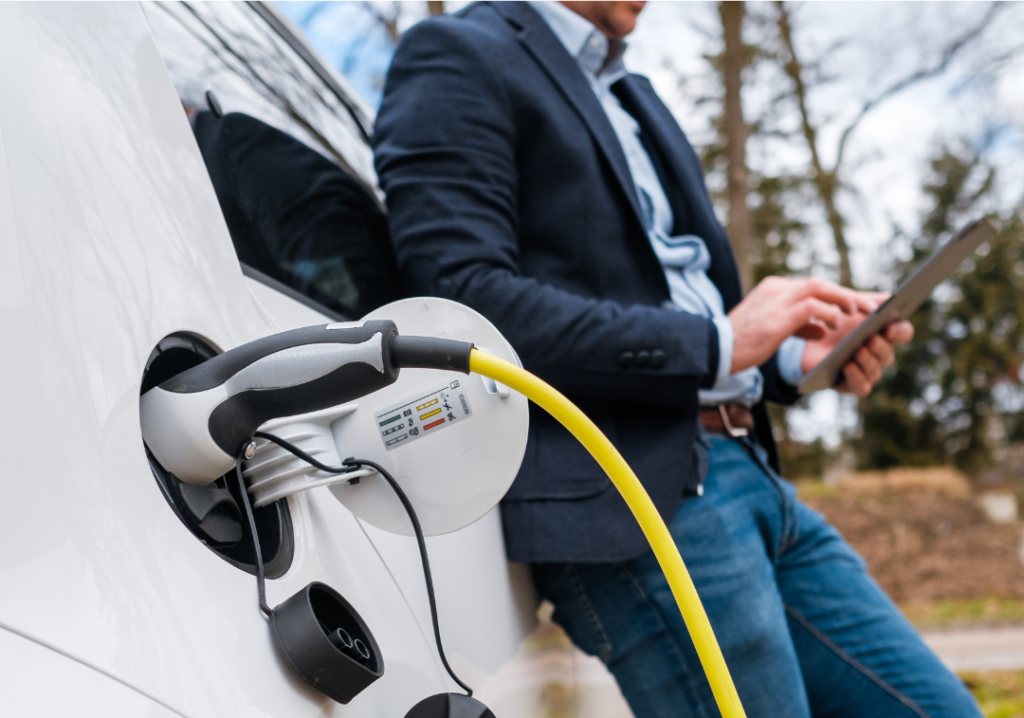- Home
- About Us
- Patent
- Trademark
- Upcoming Event-12Dec-25
- Services
-
-
- Patents
- Patent Filing & Prosecution Services
- Patenting in USA
- Freedom to Operate Search
- Patentability Search (Prior Art )
- PCT Application Drafting & Filing
- Patent Search, Drafting & Filing in USPTO
- Infringement Analysis
- Patent Landscape
- Patent Valuations Services
- Patent Drafting Services
- Patent Filing Services
- Responding to Office Action
- Patent Support Outsourcing Service
- Patent Search Outsourcing
- Pre Grant Opposition
- Patent Validity/Invalidity Search and Opinion
- IP Audit
- Patents
-
- Blogs
- Contact
- enquiry@brainiac.co.in
- Pune: +91-20-711-71800 Mumbai :+91-22-48934806 Pune :+91-9112299453
Protect Your Electric Vehicle Business for a Secure Future using Intellectual property rights
Discover Strategies to Safeguard Your Investments and Stay Ahead in the Electric Vehicle Revolution
Protect Your Electric Vehicle Business :

The electric vehicle (EV) revolution is here, and it’s accelerating at an unprecedented rate. As the world continues to shift towards sustainable transportation, the demand for electric vehicles and related products is soaring. This presents a golden opportunity for businesses in the EV sector, but it also comes with its fair share of challenges.
Protecting your electric vehicle products and your company is paramount to ensure long-term success in this rapidly evolving industry. From safeguarding intellectual property to ensuring the safety and reliability of your products, there are several aspects that need to be considered.
History of EV
In 1827, a groundbreaking invention was made by Mr. Anyos Jedlik, who constructed the first rudimentary but functional electric motor. It featured a stator, rotor, and commutator. A year later, in 1828, Jedlik ingeniously used his creation to propel a small car.
Then, in 1837, the first recorded electric locomotive was constructed by Mr. Robert Davidson, a chemist from Aberdeen, Scotland. Remarkably, it was powered by galvanic cells, otherwise known as batteries.
Following this, in 1840, England granted a patent for using rails as conductors of electric current. The United States followed suit in 1847, issuing similar patents to Lilley and Colten.
Read More
Fast forward to 1887, the Royal Bavarian State Railways employed the first battery rail car.
Subsequently, in 1959, the American Motors Corporation (AMC) and Sonotone Corporation announced a collaborative research effort to explore the possibility of producing an electric car powered by a “self-charging” battery.
In a monumental development, Porsche designed its first electric vehicle (EV) in 1989 and launched its first hybrid car in 1900.
Then, at the 1990 Los Angeles Auto Show, Roger Smith, the President of General Motors, unveiled the GM Impact electric concept car. He also announced GM’s plans to manufacture electric cars for public sale.
In the United States, the Electric and Hybrid Vehicle Research, Development and Demonstration Act of 1976 incentivized the development of electric vehicles by providing government support.
Entering the 21st century, California-based electric car maker, Tesla Motors, began developing the Tesla Roadster in 2004. The first deliveries to customers occurred in 2008. The Roadster was a trailblazer as it was the first highway-legal, serial production all-electric car to use lithium-ion battery cells and the first production all-electric car to achieve more than 320 km (200 miles) per charge.
In December 2010, the Nissan Leaf was introduced in Japan and the United States. It was the first modern all-electric, zero tailpipe emission, five-door family hatchback.
Fast forward to March 2020, the Tesla Model 3 surpassed the Nissan Leaf to become the world’s best-selling electric car, with over 500,000 units delivered.
This historical journey reflects the evolution of electric vehicles and the progress that has been made towards a cleaner and more sustainable future
1. Intellectual Property Protection
1.1 Patent Your Innovations:
Patent Your Innovations Secure your technological innovations by obtaining patents. This will prevent competitors from copying your ideas and will provide you with a competitive edge. Utility patents protect new and useful inventions or discoveries. For electric vehicles (EVs), the following (but not limited to) can be protected under utility patents:
Read More
Battery Technology: Any new and innovative battery technology, including the composition of the battery, charging technology, or battery management systems.
Motor Design: The design of the electric motor, including any innovations that make it more efficient, powerful, or compact.
Power Management System: Innovations in the system that manages the distribution of power between the battery, motor, and other components of the vehicle.
Regenerative Braking System: Any new and useful improvements in the regenerative braking system, which converts kinetic energy back into stored energy in the battery.
Charging System: Innovations in the charging system, including the design of the charging port, fast charging technology, or wireless charging capabilities.
Vehicle Control System: Innovations in the system that controls the vehicle, including the software and hardware that manage things like acceleration, braking, and steering.
Autonomous Driving Technology: Any new and useful innovations related to autonomous driving, including sensors, algorithms, and control systems.
Thermal Management System: Innovations in the system that manages the temperature of the battery, motor, and other components of the vehicle.
Drive Train: Innovations in the drive train, including the transmission, differential, and axles.
User Interface: Innovations in the user interface of the vehicle, including the design of the display, controls, and any
1.2 Design
Design registration is a type of intellectual property protection that protects the visual design of objects such as the shape, surface, or ornamentation. For electric vehicles, the following can be protected under design registration:
Read More
1 Body Shape: The unique shape of the vehicle’s body can be protected. This includes the overall shape, contours, and aerodynamic design of the vehicle.
2 Interior Design: The design of the interior of the vehicle, including the layout of the dashboard, seats, and other interior features.
3 Lighting Design: The design of the headlights, taillights, and any other external lighting on the vehicle.
4 Wheel Design: The design of the wheels, including the rims and hubcaps.
5 Instrument Panel: The design of the instrument panel and any unique features it may have.
6 Chassis: Unique design of vehicle Chassis or frame.
7 Carriers: Unique design of carriers,
8 Headlight, tail lights and anything that can be sold separately and are unique in design should be protected under design registration.
1.3 Trademarks:
Trademarks protect words, names, symbols, sounds, or colors that distinguish goods and services. For electric vehicles (EVs), the following can be protected under trademark:
Read More
1 Brand Name: The name of the brand or company that manufactures the electric vehicle.
2 Logo: The logo of the brand or company that manufactures the electric vehicle.
3 Slogan: Any slogan or tagline associated with the electric vehicle or the brand.
4 Product Name: The name of the electric vehicle model.
5 Unique Sound: The unique sound made by the electric vehicle, if any. Electric vehicles are generally quiet, but some manufacturers add artificial sounds for safety or branding purposes.
6 Unique Colors: Any unique colors associated with the brand or the electric vehicle.
Trademark Classes relevant for EV manufactures
Class-9 for Apparatus, instruments and cables for electricity
Class-12 for Electric Vehicles & Motors
Class-37 for Charging of batteries and power storage devices, and rental of equipment therefore
1.4 Copyright:
Copyright protection applies to original works of authorship fixed in a tangible medium of expression. It typically applies to literary, musical, and artistic works, such as poetry, novels, movies, songs, computer software, and architecture. For electric vehicles (EVs), the following can be protected under copyright:
1 Software: The software code used in the vehicle’s computer systems, autonomous driving systems, user interface, and any other software used in the vehicle.
2 User Manuals: The user manuals and instructional materials provided with the electric vehicle.
3 Advertisements: The advertisements, promotional materials, and marketing materials for the electric vehicle.
4 Engineering Drawings: The original design/engineering drawings and schematics of the electric vehicle.
5 Original Artwork: Any original artwork or graphics used in the vehicle’s user interface, branding, or promotional materials.
Areas of Focus for EV Manufacturers
- Product Safety and Reliability
- Implement Quality Control: Ensure that all your products meet the highest quality standards by implementing rigorous quality control processes.
- Regular Testing: Conduct regular testing of your products to ensure they are safe and reliable for use.
- Cybersecurity
- Protect Your Data: Implement robust cybersecurity measures to safeguard your company’s data and sensitive information.
- Secure Your Vehicles: Ensure that the software used in your vehicles is protected against hacking and unauthorized access.
- Supply Chain Security
- Vet Your Suppliers: Conduct thorough background checks on all your suppliers to ensure they are reputable and reliable.
- Implement Security Measures: Implement security measures at every stage of the supply chain to prevent theft, tampering, or sabotage.
- Insurance
- Get Comprehensive Insurance: Protect your business from unforeseen events by getting comprehensive insurance that covers all aspects of your business.
Get in touch with the Brainiac Team

Frequently Asked Questions
Protect your EV business by filing patents for innovations, registering design patents, trademarks for branding, copyright for software and drawings, and implementing cybersecurity and supply chain protections.
Yes, Indian EV startups can file utility patents, design patents, and trademarks to safeguard inventions, product designs, and brand identity.
EV businesses should consider utility patents for inventions, design registration for vehicle aesthetics, trademarks for brand identity, and copyright for software, manuals, and engineering drawings.
Yes, software can be patentable if it provides a technical solution, e.g., battery management systems or autonomous driving. Copyright also protects source code and related software content.
Important classes include Class 9 (electrical apparatus), Class 12 (vehicles & motors), and Class 37 (charging stations, battery services, equipment rental).
Costs vary based on the type of patent, complexity, and professional fees. Generally, Indian EV patent filing ranges from ₹20,000 to ₹1,00,000 for startups, including official fees and professional drafting.
Yes, unique battery technologies, charging systems, and associated innovations can be patented as utility patents to prevent competitors from replicating your inventions.



